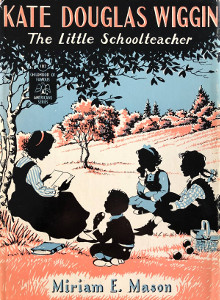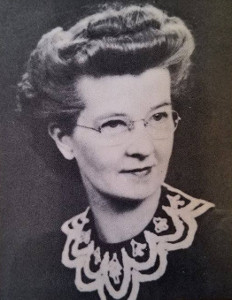Kate Douglas Wiggin: The Little Schoolteacher

Author:
Miriam E. Mason
Illustrator:
Dorothy Bayley Morse
Publication:
1958 by Bobbs-Merrill Company
Genre:
Biography, Non-fiction
Series:
Childhood of Famous Americans (Authors and Composers)
Series Number: 103
Current state:
This book has been evaluated and information added. It has been read but content considerations may not be complete.
Book Guide
Search for this book used on:
Miss Prinnie's dame school was just one bench, filled with five-year-old Kate and four other little children. Dame Prinnie sat near by, with her sewing, and stitched away while she tried to teach her pupils the A B C's. "A-b, ab; b-a, ba," they had to chant, over and over, though they were all bored with this lesson.
Now and then, after they had recited well, Miss Prinnie would treat her pupils to a story. But her stories were all about impossibly good children or unbelievably bad ones. Nothing very interesting happened in her tales, except that these children all died young.
Kate found it hard to listen to such stories. Her mind had a habit of flying away from things that bored her. She wished Miss Prinnie would tell a fairy tale, or read aloud from one of Mr. Charles Dickens' novels, as Kate's mother did. Kate kept hoping for something livelier till the day she discovered that poor old Miss Prinnie had no books and didn't know any interesting stories. Kate couldn't think of anything sadder. Why, already she knew all the stories in all the volumes in the walnut bookshelves at home. How dreadful not to know any stories! And how lonely not to have any book-friends!
In Kate's own home there was plenty of storytelling and reading. It was Kate's responsibility also to teach her younger sister Nora—and later their baby brother Philip—everything she had learned. By the time she had taught Nora how to sew, sing, read, play the piano, make milk toast, act in plays and spell, Kate had plenty of ideas about teaching. Learning could be much more fun, she thought, than the teachers in their little Maine village school made it. If she were a teacher, her school would have only nice things: songs and games and stories – and certainly no hard arithmetic. Most of the time would be spent on stories, for next to reading Kate loved acting out stories or using her imagination to make up new tales.
All her life Kate felt exactly the same way about teaching and storytelling, and when she grew up, these two things were to make her famous. A new kind of school—the kindergartens for small children—needed cheerful, pretty young teachers like Kate. She became one of the first teachers, of the first free kindergarten in San Francisco. And then, to earn money for her kindergarten materials, Kate began to write stories. Books like The Birds' Christmas Carol and Rebecca of Sunnybrook Farm—a story of a Maine village like Hollis, where Kate's own happy childhood was spent—and many other tales made Kate Douglas Wiggin famous and beloved as "the children's storyteller."
From the dust jacket
To view an example page please sign in.
Content Guide
Please sign in to access all of the topics associated with this book and view other books with the same topics.
Please sign in to access the locations this book takes place in and view other books in the same location.
Please sign in to access the time periods this book takes place in and view other books in the same time period.
For information about the lead characters please sign in.
Find This Book
Search for this book used on:



